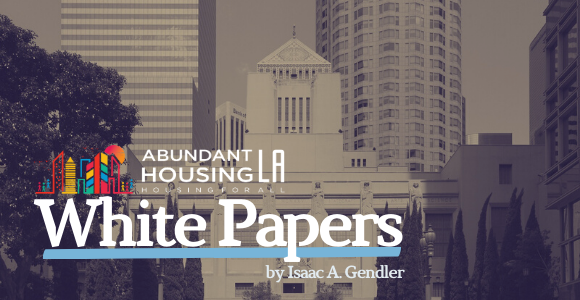There seems to be a strong disconnect when it comes to ranges in housing discourse. If you talk to many people, you would probably think that neighborhoods are either rows of suburban-style single-family housing or a “manhattan-like” cluster of skyscrapers. However, there exists a nice happy medium in between these two extremes called Missing Middle Housing. According to Daniel Parolek, the coiner of the term, Missing Middle Housing is defined as multifamily housing whose density lies within this gap. Types of Missing Middle Housing typically include multiplexes, cottage courts, townhomes, small apartments, and live/work units. If built close to transit, then these spaces can provide their dwellers an enjoyable, affordable living experience. Missing Middle Housing can also be the perfect place to raise a family, since there is a good chance that you will have a backyard and be in a quiet environment while not having to pay too much money.
But why exactly is Missing Middle Housing have the word “Missing” in the title? Well, it all has to do with the history of zoning. Until the advent of the Second World War, Missing Middle Housing was a common form of development. However, the rise of the suburbs and automobile following the armistice led to the mandating of sizable amounts of parking space per unit to accompany new developments. This made these types of projects infeasible, as projects would no longer pencil out financially. However, given the new country-wide supply crisis and the ease of integrating Missing Middle Housing into current single-family neighborhoods, cities and municipalities are looking at passing Missing Middle zoning ordinances.
One neighborhood in Los Angeles that could particularly benefit from this rezoning is Miracle Mile. Miracle Mile is a neighborhood on the western end of Cental Los Angeles. Home to a voluminous collection of museums such as The Los Angeles County Museum of Art, The La Brea Tar Pits, and the Peterson Automotive Museum as well as a strip of mom and pop stores, the district is regarded as a central cultural gem for Los Angeles. The neighborhood is ranked as one of the most walkable in the entire city of Los Angeles, and given its easy access to jobs centers in Koreatown, Hollywood, Downtown, and Beverly Hills, residents of the area can have a simple commute (at least by L.A standards). And with the opening of a new Metro purple line in the area by 2023, the area is going to become even more connected to the rest of the city.
However, one thing stands in the way. When redlining was going around, the area of the neighborhood south of Wilshire Boulevard were specified to be in the wealthier areas. To prevent their privileged status from sliding, much of this area became zoned exclusively for single-family housing. As a result, housing values have increased exponential to around $1.32 million dollars this year! This blocks off vast multitudes of potential residents from enjoying the high quality of life that the neighborhood has to offer. Residents that would have taken full advantage of its transit-accessibility, ditching a car-centric lifestyle and helping move the planet towards a more sustainable paradigm. How can we change this to allow for more Missing Middle Housing in Miracle Mile?
The answer may come in the form of The Purple Line Plan. The Purple Line Plan is an initiative launched by Abundant Housing Los Angeles and Friends of the Purple Line, a group of local stakeholders who seek to build a growing, dynamic, inclusive, and affordable Miracle Mile through the Purple Line Metro extension. The details of the Purple Line Plan include:
- Require new residential construction to set aside 10-23% of housing units for Angelenos with lower incomes (similar to the Expo Line TNP) This would ensure that lower-income Angelenos would be able to move to
- Allow denser residential construction on major commercial corridors, within one mile of the new Purple Line stations. This would allow for mixed-use development on Miracle Mile, greatly increasing the amount of residential space in the city.
- Legalize fourplexes and small apartment buildings in residential areas that are currently restricted to single-family homes only, within one mile of the new Purple Line stations This would effectively abolish single-family housing within walking distance of the new stations.
- Require new residential construction to set aside 10-23% of housing units for Angelenos with lower incomes (similar to the Expo Line TNP) This would ensure that lower-income Angelenos would be able to move to Miracle Mile.
- Provide tenants with $23,000-$57,000 in cash compensation, one year of rent payment in a comparable apartment, and right of return at the previous rent before an RSO unit can be taken off the market for redevelopment This would ensure that existing Rent Stabilization Ordinance tenants will not have to leave the neighborhood.
- Create new parks and plazas, and prioritize safety and access by widening sidewalks, painting crosswalks, planting trees, and adding protected bike lanes. This would remake Miracle Mile as being a neighborhood built for cars into one that is built for humans.
If implemented, the Purple Line Plan would accomplish the following:
- Create 36,000 new homes near the new Purple Line Metro stations by 2035, including up to 8,000 affordable homes
- Offer renter protections and affordable housing set-asides that are much stronger than what’s currently required by law
- Improve Miracle Mile’s streetscapes, with attractive building design, new parks, wider sidewalks, and more trees
- Support Los Angeles’ citywide housing target of 455,000 new homes by the end of the decade
Miracle Mile’s future is coming to a crossroad. Either it can continue its current path and become more expensive, segregated, and exclusionary. Or, it can embrace its central position in Los Angeles, and grow to become a model neighborhood for the entire country. Its adoption of new upzoning plans will be the deciding factor.




